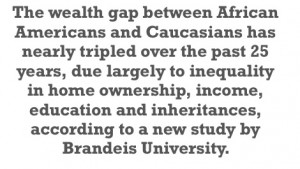Despite living in an era popularly deemed as post-racial and with national educational policies in place, such as No Child Left Behind and Race to the Top, African American males everywhere, and in Miami, Florida especially, remain underserved in their schools and continue to lag far behind other groups in their academic trajectory.

A nation-wide report on graduation rates for African American males reveals that Miami-Dade County ranks as the fifth worst county with a large enrollment of African American male students. According to the Office of Civil Rights, only 27% of African American males in the county graduated from high school in 2007-2008. It is clear that African American males in Miami-Dade County face significant barriers to a quality education, preparation for college and the promise of a fulfilling life.
One such barrier remains the continuing segregation of communities in Florida. This on-going segregation breeds substantial differences in the access to resources and is due in part to property tax revenues, local funding formulas and school administration policies. Higher spending districts in Caucasian neighborhoods have greater instructional resources, better facilities, smaller class sizes and higher paid and more experienced teachers (Darling-Hammond, 2008). Furthermore, not only do funding systems and other policies form a condition in which urban school districts receive fewer resources than their suburban counterparts, schools with high concentrations of people of color receive fewer resources than other schools within the same districts (Darling-Hammond, 2008).
Additionally, African American males are too often met with the soft bigotry of low expectations. Researchers, educators and policymakers all agree that teachers’ expectations of what their students’ are capable of, do in fact become self-fulfilling prophecies for their students academic performance. Nationally acclaimed educational consultant, Dr. Kunjufu, speaks and writes extensively about the problem of low expectations. He and others find that America’s mostly Caucasian, middle-class and female teachers are ill-equipped to teach the African American students, whom make up a considerable percentage of poor students in schools, and thereby develop low expectations for them. Underscoring this point and adding to the barriers they face, is the fact that many African American boys often do not feel cared for in their school communities (Ferguson, 2002, Roderick 2008).
 Furthermore, the emerging nationwide school-to-prison pipeline phenomenon has hit African American males the hardest and Miami-Dade County has been no exception. With more and more school policies and practices that push students away from their classrooms and into jails and prisons, the struggle for African American males to obtain a quality education becomes even more difficult. In a report on the school-to-prison pipeline, 80% of the Miami youth surveyed believed they have been suspended for minor things that are common among young people, including dress code violations, being late, skipping class, disobediences and fighting. Also, 58% of those surveyed believe their school depends too much on the police to handle discipline and 56% believe students are arrested for minor offenses. With these types of experiences and the criminalization of urban schools, it is no wonder why there are more African American men behind bars or under the watch of the criminal justice system than there were enslaved in 1850 (Alexander, 2010).
Furthermore, the emerging nationwide school-to-prison pipeline phenomenon has hit African American males the hardest and Miami-Dade County has been no exception. With more and more school policies and practices that push students away from their classrooms and into jails and prisons, the struggle for African American males to obtain a quality education becomes even more difficult. In a report on the school-to-prison pipeline, 80% of the Miami youth surveyed believed they have been suspended for minor things that are common among young people, including dress code violations, being late, skipping class, disobediences and fighting. Also, 58% of those surveyed believe their school depends too much on the police to handle discipline and 56% believe students are arrested for minor offenses. With these types of experiences and the criminalization of urban schools, it is no wonder why there are more African American men behind bars or under the watch of the criminal justice system than there were enslaved in 1850 (Alexander, 2010).
Reports by the Education Trust, the American Council on Education and the Schott Foundation all indicate that African American boys are disproportionately referred to special education, are underrepresented in advanced placement and college prep courses, and receive more disciplinary suspensions and expulsions than any other group in U.S. schools today. Therefore, we must combat the many challenges that plague African American male students in Miami-Dade County if we are serious in our pursuit to close the achievement gap and offer them the opportunity to fulfill their potential that all children deserve.
